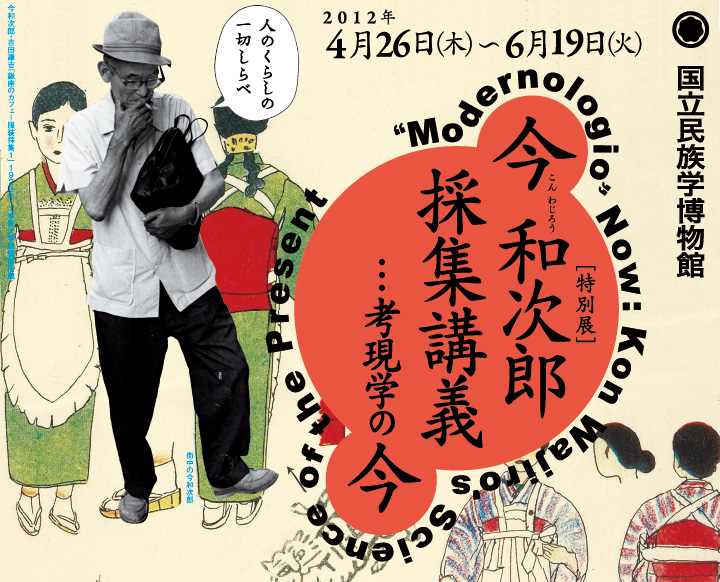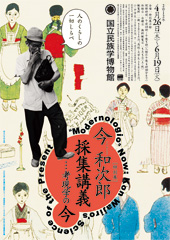"Modernologio" Now: Kon wajiro's science of the Present

The sketches and notes left to us by Kon Wajiro have a distinctive style, with attached captions and graphically represented statistics through which we are able to glimpse his warmth and the breadth of interest that he brought to his observations of ordinary people's lives. The techniques and target of observation that Kon employed in Modernologio (Modernology) closely resemble those used in ethnological research. In fact, Umesao Tadao, the first Director General of Minpaku, was inspired by Kon's work and produced many field notes and sketches similar to the Modernologio during his fieldwork among the Mongols and other peoples outside Japan. Subsequent Minpaku researchers have extended the heritage of Modernologio, adding such techniques as combining the investigation of artifacts by interviewing their users, documenting them on video,and creating databases that allow further analysis of their research results.
In this exhibition, we try to illustrate the heritage and progress of Modernologio in Minpaku research by comparing Umesao’s research materials related to the Mongolian Yurt with the most recent research. We also display a full set of traditional Kyoto town house furnishings from the Omura Shige Collection, and a collection of Westernized Japanese apparel from the period when Modernologio was founded, as well as the documents obtained by the detailed observations and extensive research that created 1/10th scale models of minka (traditional Japanese houses) at the time the Minpaku exhibition galleries first opened to the public.
Through this exhibition, visitors are invited to rethink the power and significance of a complete description of everyday lives rooted in the study of these artifacts. We need to consider what it means to be living in today’s world, where lifestyles and material culture change so rapidly, and people only become aware of the irreplaceable value dwelling within details of everyday life after they are lost.
- Exhibition Period: April 26 - June 19, 2012
- Location: The Special Exhibition Hall, National Museum of Ethnology
- Hours: 10:00 a.m. – 5:00 p.m. (Entry permitted until 4:30 p.m.)
- Closing days: Every Wednesday
- Admission Free Day: May 5 (Saturday, a national holiday)
-
Admission fees: Adults ¥420 (¥350), Students (high school and university) ¥250 (¥200), Children (elementary and junior high school) ¥110 (¥90)
*This admission fee also entitles visitors to view the exhibits in the Main Exhibition Hall.
Figures in parentheses apply to groups of 20 persons or more, university students who use the Museum as part of their course work, high school students writing reports on the Museum, those who have visited the Museum within the previous 3 months, and visitors aged 65 and over (upon presentation of an ID). - Organized by the National Museum of Ethnology
- With special cooperation from the Kogakuin University Library
- Sponsored by the Senri Foundation
- Supported by the Architectural Institute of Japan, the Japan Institute of Architects, theZennihon Kenchikushikai, the Japan Society of Lifology,and the Japan Society for Folk Architecture
- With cooperation from the Aomori Museum of Art, Shiodome Museum, Aomori Studio Co., Ltd., Shokado Co., Ltd., and the Commemorative Organization for the Japan World Exposition '70.







